Can satellite imagery fight illegal logging in Mexico?
New monitoring system aims to combat deforestation in Michoacan, but locals remain sceptical about enforcement.
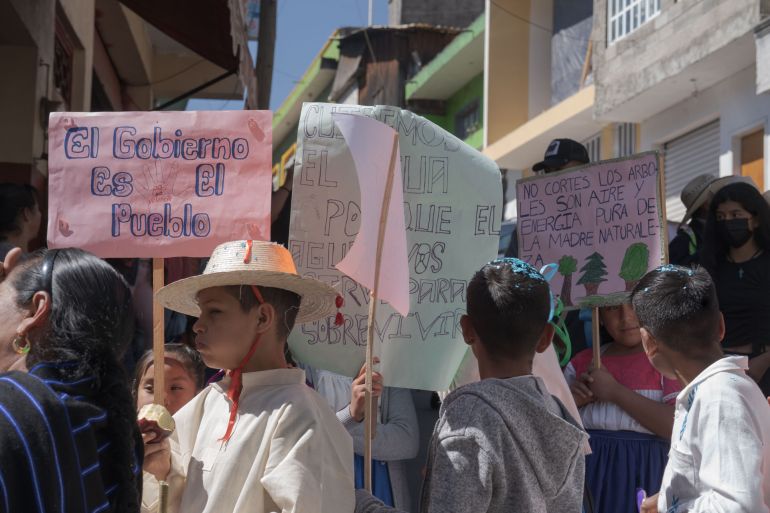
Cheran, Mexico – Shortly after sunrise, several women arrive at a tree nursery on the outskirts of Cheran, an Indigenous Purepecha town in the Mexican state of Michoacan.
For years, they have cared for thousands of trees being used to reforest areas destroyed by illegal logging operations. Between 2006 and 2012, researchers estimate that about 70 percent of Cheran’s forests were ravaged by organised criminals as locals staged protests to denounce police inaction.
Keep reading
list of 3 items‘I was a prisoner of Mexico’s US-backed migrant detention regime’
Deadly migrant centre fire in Ciudad Juarez, Mexico: What we know
During those years, residents became used to the sight of dozens of trucks driving through their town, loaded with timber stolen from local forests. Violent confrontations ensued, with more than a dozen community members reportedly killed or disappeared.
“The devastation was massive,” Yunuen Torres, who lives in the town, told Al Jazeera. People were forced to sell their land to the criminals, and if they refused, they sometimes disappeared, Torres added.
Today, the state of Michoacan is on the cusp of rolling out a new surveillance system designed to help combat this type of crime.
On June 5, World Environment Day, the state government will begin using a satellite analysis tool that can detect changes in forest cover caused by logging, fires or new crops. The system will generate automatic alerts when such changes are detected.
“We had great impunity,” Alejandro Mendez, Michoacan’s environment secretary, told Al Jazeera. “What we need is to regain control as a government because the collective interest is to take care of forests.”
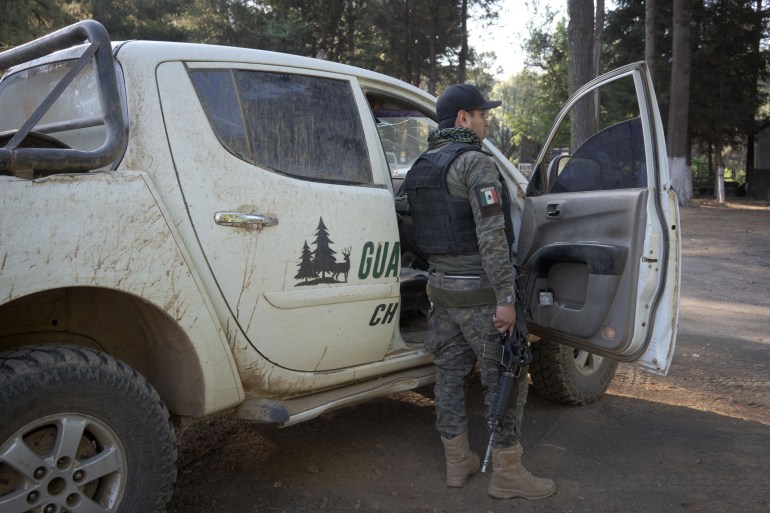
Reporting without fear
Heriberto Padilla, the chief executive officer of Agriicola, the Mexican start-up that designed the new monitoring system, said it will help bring accountability to Michoacan. Reporting environmental crimes in the state can be a deadly business, he told Al Jazeera.
“That is exactly what the system will do: report without being afraid. By filing complaints, authorities are compelled to solve the cases within a certain period of time,” he said. “If they do nothing, it is proof that there is a corruption problem.”
Agriicola has designed a website where information about the system and any alerts generated will be publicly available, while also being transmitted to state authorities, Padilla said. The state has committed to pursuing “all legal processes” to follow up on these reports and ensure those responsible for deforestation are held accountable, he added.
In Cheran, where tensions exploded into a popular uprising in 2011, the illegal loggers were ultimately pushed out. The fight of the Purepecha people also laid the foundations for an unprecedented political project that granted the Indigenous community self-governance, with forest conservation remaining a core value to this day.
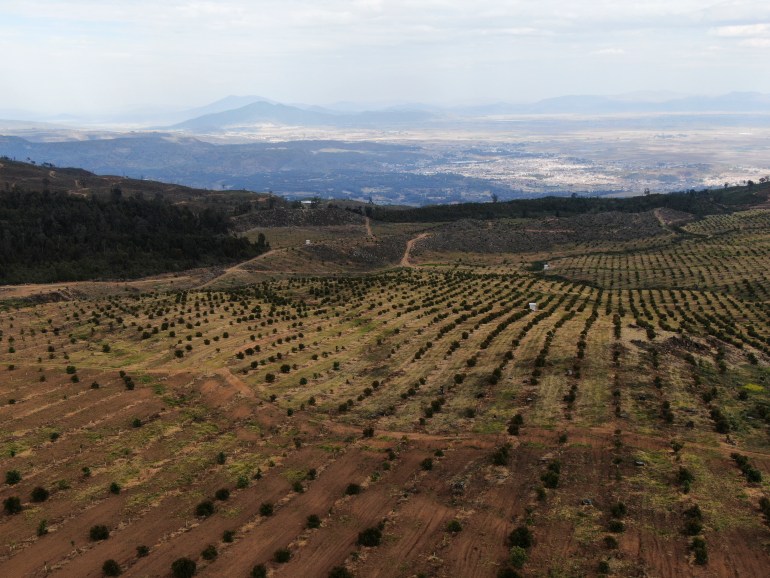
But the threat of illegal logging still looms, and some are sceptical of how the new satellite system will work in practice.
“It is a tool for the government, but effectively many other tools are already in use,” one community member told Al Jazeera on condition of anonymity. “We are working on community mapping and we are using drones.”
Across Michoacan, deforestation for the purposes of developing illegal avocado plantations has become a widespread problem. In some cases, these plantations have ties to public officials, the community member said, raising questions as to whether the Agriicola system would actually bolster enforcement efforts: “How are they going to denounce [the plantations] if high-ranking public officers are involved?”
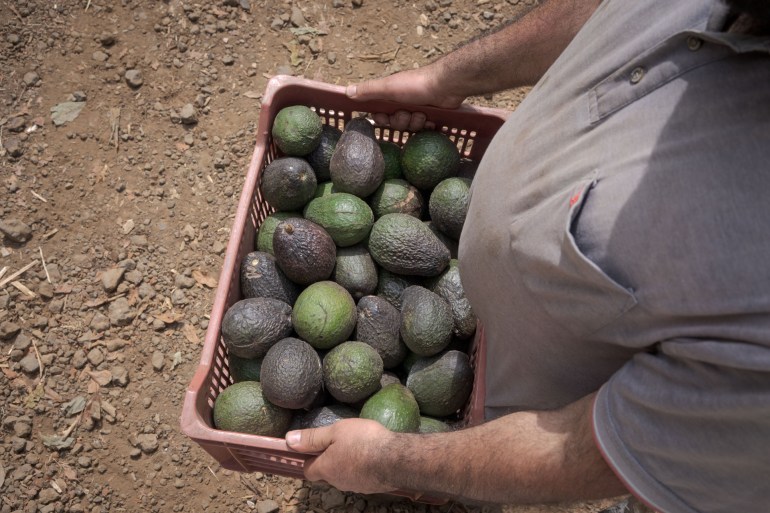
Avocado farming
According to the Mexican government, between 2001 and 2018, more than 260,000 hectares (642,000 acres) — almost twice the size of Mexico City — were deforested in Michoacan. More than one-fifth of this area was converted into agricultural land, part of which was used to grow avocados.
Converting forested land into avocado farms has been effectively prohibited across Michoacan since the late 1980s. Doing so requires a license for land-use change, which has not been granted for this purpose in more than 30 years, Mendez said.
In Michoacan, known as the “avocado capital of the world”, about 30 percent of current avocado crops are illegal, Mendez said. The United States imported more than 1 million tonnes of avocados from Mexico last year, bringing in revenues of more than $3bn, according to official data.
Forests continue to be illegally destroyed in order to grow avocados and other export crops that “have great economic attractiveness” but are putting massive pressure on local forests and jungles, Mendez said. Avocados are also a particularly thirsty crop, sending parts of the state into a “desertification spiral” that will be intensified by climate change.
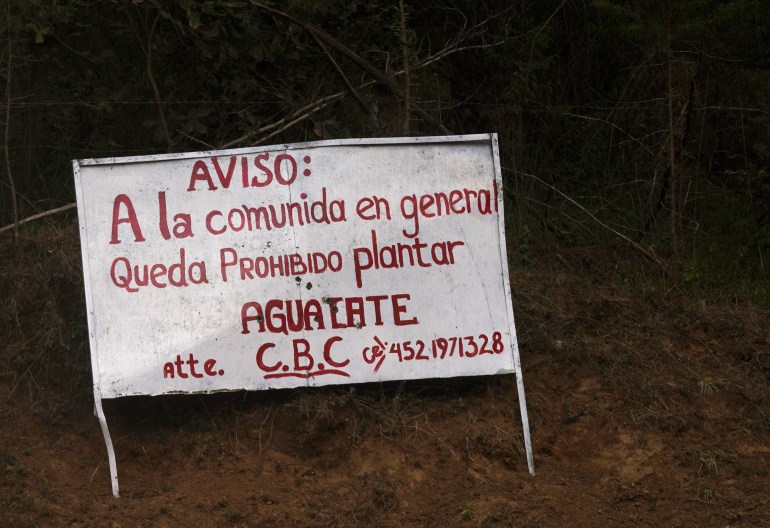
In the meantime, ahead of next month’s formal launch, Agriicola has been testing its monitoring system and has already identified thousands of potential violations in Michoacan, Padilla said.
Yet Irene Alvarez, a researcher with the non-profit Noria Research group, says that it is not identification, but rather the follow-up, that will pose a key challenge.
“The problem is not to see how the landscape is changing, but rather to be able to identify whose plantation it belongs to and to be able to give it a judicial follow-up,” she told Al Jazeera. While the satellite system will be a useful tool for gathering evidence, “it will not solve the underlying problem, which is precisely that we need a sufficient budget [for combatting environmental crimes] and judicial enforcement”.
This article was supported by GRID-Arendal’s Investigative Environmental Journalism Grants programme.